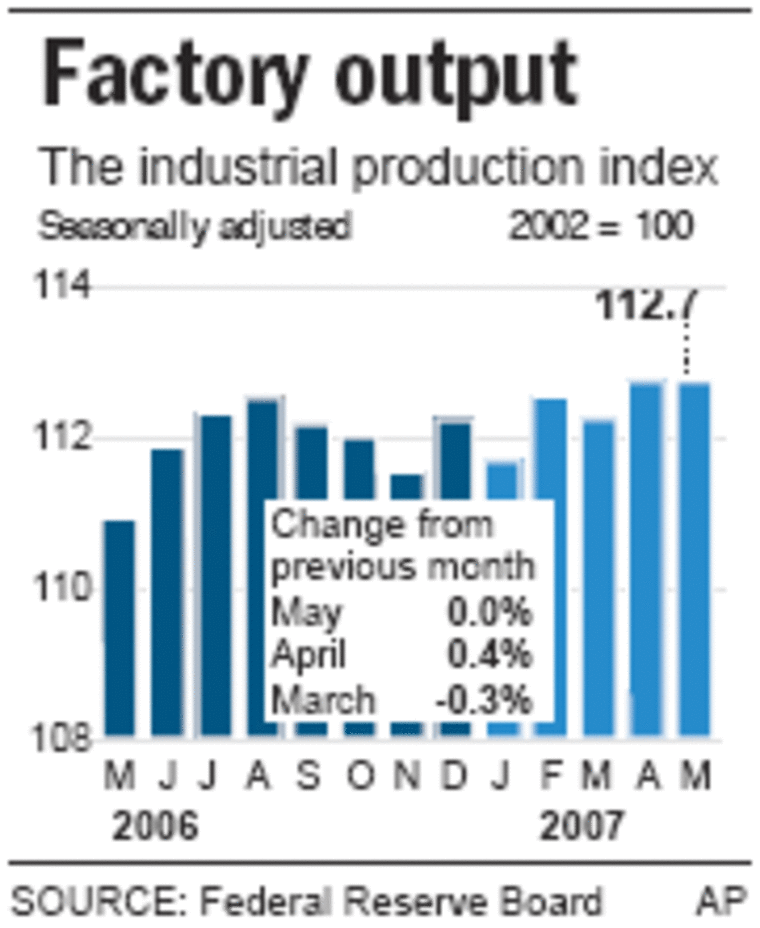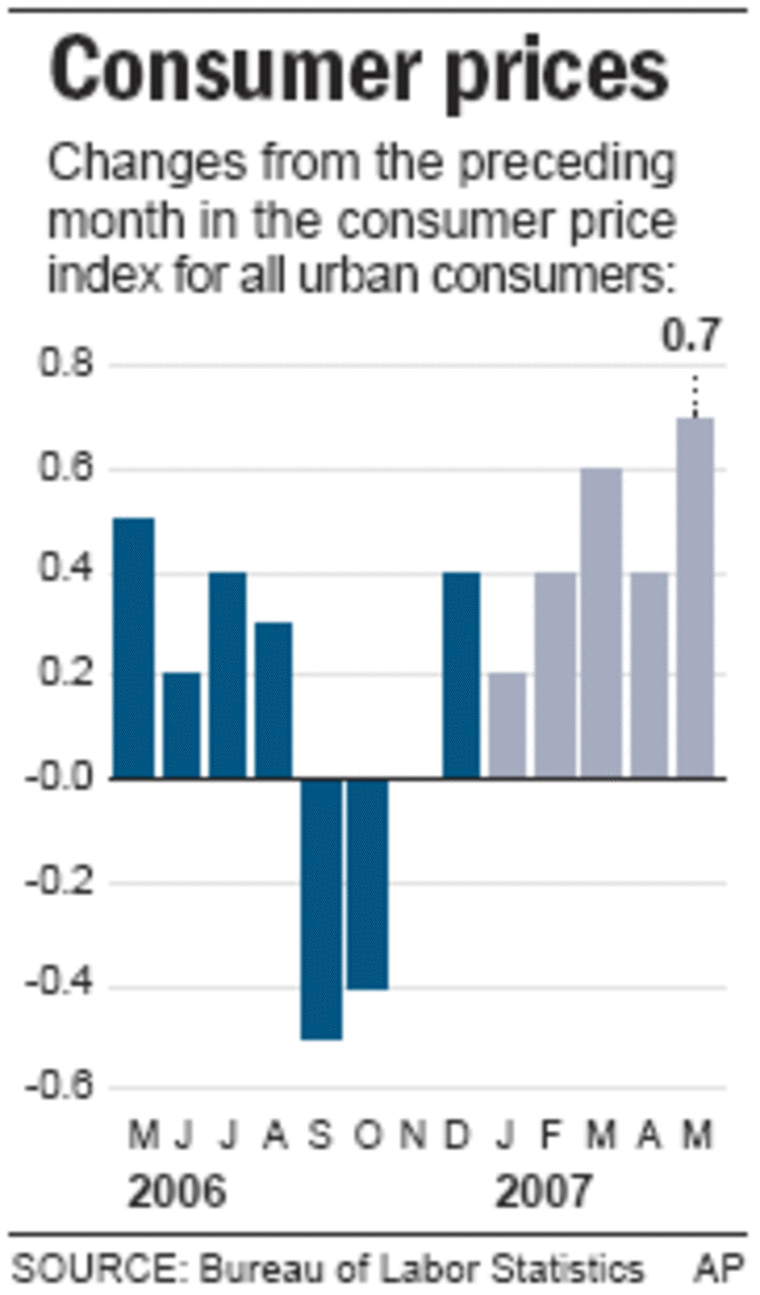Consumer prices surged in May at the fastest pace in 20 months, fueled by another big rise for gasoline and an increase for food as well.
Inflation was docile in other areas, with prices for computers, clothes, cars and airline tickets all falling.
The Consumer Price Index posted an increase of 0.7 percent, the biggest one-month gain since the fall of 2005 when energy prices surged after Hurricane Katrina shut down Gulf Coast oil production. Excluding energy and food, the increase for so-called core inflation was just 0.1 percent.
Wall Street chose to focus on the lower-than-expected core reading, believing the Federal Reserve will be happy such pressures are beginning to ease and will leave interest rates alone at their meetings for the rest of the year.

While investors were happy, the big increases in energy and food still meant consumers were falling behind in the cost-of-living struggle. The government said in a separate report that weekly earnings for non-supervisory workers, after adjusting for inflation, fell by 0.2 percent last month. That was the fourth decline in the past five months, reflecting the bite inflation is taking out of paychecks.
“While financial markets love the fact that underlying inflation is tame, if you are an average American and see your food costs rising rapidly and gasoline above $3 per gallon, then inflation doesn’t seem so low,” said Mark Zandi, chief economist at Moody’s Economy.com.
In other news, the government reported that industrial output was flat in May after a strong 0.4 percent gain in April. However, analysts said the weakness in May was heavily influenced by a return to more normal weather after a colder-than-normal April. The change resulted in a big drop in demand for electricity to heat homes.
Financial markets have been roiled in recent weeks by global inflation concerns. The yield on the benchmark 10-year Treasury security hit a five-year high earlier this week, causing a dive in stock prices. Investors were worried that rising interest rates could prolong the troubles in the slumping housing market.

However, stocks have since rebounded on the good readings on core inflation. A report on Thursday had found core wholesale prices rose by only 0.2 percent.
While investors have abandoned hopes that the Federal Reserve might cut interest rates this year, they are becoming more confident that moderate inflationary pressures will keep the Fed from raising the short-term rates that it controls.
In a third report, the deficit in the current account, the broadest measure of foreign trade, increased by 2.5 percent to $192.6 billion in the January-to-March period, compared with $187.9 billion in the fourth quarter. The increase, which was slightly below what analysts had expected, reflected higher foreign oil imports.
So far this year, consumer prices have been rising at an annual rate of 5.5 percent, double the 2.5 percent for all of 2006. The acceleration has occurred because of the surge in energy costs and increases in food costs that have been caused in part by higher demand for ethanol, which is produced with corn.
Excluding food and energy, core prices are up at an annual rate of 2.1 percent through May, a better showing than the 2.6 percent rise for all of 2006.
It is the core figure that officials at the Federal Reserve follow closely. Fed policy-makers pushed interest rates up for two years in an effort to slow the economy enough to keep inflation under control, but since the last rate hike in June 2006, they have been content to leave rates unchanged.
For May, energy prices rose by 5.4 percent, driven by a 10.5 percent jump in gasoline pump prices. The surge in gasoline costs appears to be moderating with the nationwide average falling by 7 cents in the past three weeks to $3.11 per gallon, according to the Lundberg Survey. That was still 95 cents higher than at the start of the year, and many economists say they are not looking for gas prices to fall much further as the country moves into the peak summer driving season.
Food costs were up 0.3 percent in May. Vegetable prices fell, but beef, poultry and fresh fruit prices were up.
The cost of new cars fell by 0.2 percent, while the cost of airline fares was down 0.6 percent and clothing costs dropped by 0.3 percent.